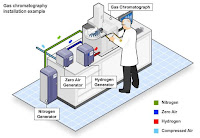On October 4, 1957, the Soviet Union launched the first artificial satellite into space, thus ushering in the Space Age. Since then, over 8,000 satellites have been launchedfrom more than 50 countries. According to Jonathan McDowell, an astronomer at the Harvard-Smithsonian Center for Astrophysics, at the end of 2021 there were around 5,000 active satellites in orbit.
In addition to all of those satellites, space is currently home to a number of other pieces of equipment, including two space stations, the Hubbell and James WebbSpace Telescopes,as well as robotic equipment, including six motorized robotic vehicles(or rovers) currently on Mars.
Once launched, equipment is expensive to replace and difficult to repair if it gets lost or damaged. In order to ensure reliability, safety, and that satellites, spacecraft, and related components will operate as intended, nearly all equipment destined for the final frontierundergo intensive testing, prior to launch, in environmentsthat replicate the conditions actually found in space.
Space is a harsh environment, and every component will be subjected to conditions unlike anything found on Earth,including microgravity, extreme hot and cold temperature cycling, ultra-vacuum atmosphere, and high-energy radiation.
Thermal Vacuum Chambers
One key aspect of the testing includes the use of thermal vacuum chambers (TVC) to replicate the ultra-cold temperatures and the airless vacuum of space. The extreme cold and absence of air pressure in TVCs will help identify flaws or weaknesses in the equipment tested.
Thermal vacuum chambershave been used for a number of years by the aerospace industry. In fact, Thermal Vacuum Chamber A, located at NASA’s Johnson Space Center in Houston, was used to test both the Apollo spacecraft before their historic missionsto space and, following upgrades, the James Webb Telescope prior to its launch in 2021.
Once equipment to be tested is placed inside the TVC, the air is evacuated. When the air, and accompanyingair pressure,areremoved, gas trapped in materials is released, and outgassing begins to occur. The released gases, and other impuritiesinside the chamber, will begin to evaporate and may condenseon the equipment,potentially making it less accurate or even unusable.
To reduce the temperature inside the chamber, and to remove lingering gases and impurities from the chamber, TVCs typically utilize cryopumps. These pumps, located at the bottom of the chambersuse cryogenic gases, such as liquid nitrogen (LN2) or helium (He), to super-chill the air and the surfaces of the cryopump tobetween -208 Celsius and -261 Celsius. As the air in the chamber passes over the surfaces, gases such as oxygen, nitrogen, helium, and hydrogen instantly freeze to the surfaces of the cryopump and are, effectively, removed from the chamber.
Oxygen Deprivation Risks When Using Cryogenic Gases
Clearly, liquid nitrogen and helium play a vital role in the development and testing of equipment used in space exploration. However, there are risks associated with use of LN2 and He. Liquid nitrogen and helium are oxygen-depleting gases that are both odorless and colorless. As such, absent appropriate gas monitoring equipment, personnel working near thermal vacuum chambers would likely be unable to detect LN2 or He leaks, and an accompanying decrease in oxygen.
According to the Occupational Safety and Health Administration (OSHA), an environment in which oxygen levels fall below 19.5 percent is considered an oxygen-deficient atmosphere and should be treated as immediately dangerous to health or life. When there is not enough oxygen in the air, persons working in the affected area may become disoriented, lose consciousness, or even suffocate due to the lack of sufficient oxygen.
PureAire Oxygen Monitors
PureAire Monitoring Systems’ Oxygen Deficiency Monitor offers thorough air monitoring, with no time-consuming maintenance or calibration required. Best practice calls for oxygen monitors to be installed anywhere there is a risk of gas leaks—i.e., wherever cryogenic gases, including liquid nitrogenand helium, are stored, and in all locations where these gases are used.
A screen displays current oxygen levels, for at-a-glance reading by employees, who derive peace of mind from the Monitor’s presence and reliable performance.
Built with zirconium oxide sensor cells, to ensure longevity, the Monitor can last, trouble-free, for 10+ years in normal working conditions.
In the event of a liquid nitrogen or helium gas leak,where oxygen decreases to unsafe levels, PureAire’s Monitor will set off an alarm, complete with horns and flashing lights, alerting personnel to take corrective action.
For over 20 years, PureAire Monitoring Systems has been an industry leader in manufacturing long-lasting, accurate, and reliable Oxygen Deficiency Monitors. We have dedicated ourselves to ensuring the safety and satisfaction of our clients, many of which have very sophisticated operating requirements. We are proud to note that NASA’s SOFIA-Stratospheric Observatory for Infrared Astronomy–a Boeing 747SP aircraft modified to carry a 2.7 meter (106 inch) reflecting telescope–carries onboard a PureAire Oxygen Deficiency Monitor.














